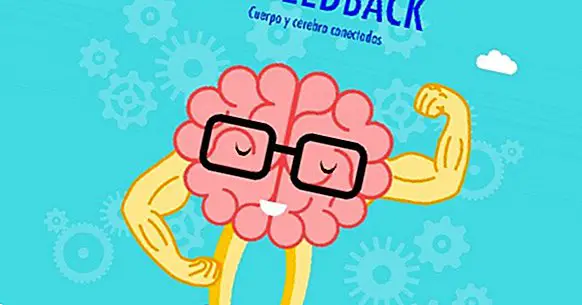Biofeedback: what is it and what is it for?
Many things have changed since the standard mode of psychotherapy consisted in the verbal healing proposed by Freudian psychoanalysis.
One of those things has to do with the loss of popularity of psychoanalysis, yes, but there is another factor at play: Nowadays, the development of technology allows us to propose inconceivable therapy proposals decades ago . The use of a technique called biofeedback It is an example of this.
Biofeedback: sensor technology applied to psychotherapy
Biofeedback is, in short, a technique based on a system of sensors thanks to which the patient is aware in real time of various physiological parameters that describe the functioning of your body.
Thanks to biofeedback a feedback loop is created thanks to which the person has it easier when learning to reach optimal functional levels in aspects such as the blood pulse, body temperature, etc. In other words, as the individual is informed in real time about what is happening in various parts of his body, he learns to associate these phenomena with certain sensations and, with a little practice, he is better able to regulate certain bodily functions. .
So, biofeedback makes the process of consciously controlling (and for our good) body processes easier that otherwise they could get out of control in certain situations negatively affecting our quality of life.
The usefulness of biofeedback
Decades ago it was believed that mental processes, everything that has normally been called "the conscious mind", was separated from the bodily functions that ensure our survival, such as heart rate, sweating, etc. The idea was, basically, that both processes ran in parallel ways, or more specifically that the conscious mind is mounted on the basic physiology of our organism just as a peripheral device is coupled to a computer or a mobile phone.
But nevertheless, the implantation of biofeedback supposes the rupture with this belief , and has allowed the emergence of a new horizon of possibilities in therapy and learning in general. Thus, for example, biofeedback allows to learn very effectively methods of relaxation, coping with anxiety and even more effective ways of breathing.
At first, the use of biofeedback is still a challenge in which we must pay attention to both the sensations we experience and the information that the sensors give us, but little by little the progress that is made can be made more easy to be present in our lives almost automatically.
In addition, biofeedback has shown scientifically proven efficacy in the treatment of insomnia, ADHD, chronic pain, anxiety disorders and phobias, and many others. Despite this, this technique is still very recent, and its usefulness and effectiveness guarantees are still a subject that is discussed in the scientific communities, depending on the type of treatment to be applied.
Types of biofeedback
The defining idea of biofeedback is what we have seen, and just because it is so simple it can be applied to many cases and be used with a wide variety of sensors , machines and computer programs.
This makes the biofeedback technique can have several utilities depending on the form adopted. These are its different types.
1. Neurofeedback
Thanks to neurofeedback Patients are informed about the way their brain is activated in certain situations. This makes it possible for the patient to relate subjective experiences about what they feel and think with the feedback provided by the machines, thus having a reference about when and when progress is made and when not.
The neurofeedback is the most obvious link between the application of biofeedback and psychology , since the measurements provide information about the state of the brain. However, there are also two other types of biofeedback.
2. Registration of the somatic nervous system
This is the type of biofeedback in which the sensors collect information about the somatic nervous system , which is the one that transmits voluntary orders from the brain to the muscles. Thus, this method allows recording information related to muscle tone, mainly through a method called electromyogram.
3. Autonomic nervous system registration
The somatic nervous system is the one that transmits orders related to involuntary actions, such as the regulation of heart rate, body temperature or the type of substances secreted in the digestive system, among others. Because, using sensors on it allows you to better control these processes and correct them when there are imbalances .
How is biofeedback used?
The biofeedback sessions are always supervised by a therapist who will guide the entire process, from the setting of objectives to the course of each of the sessions (lasting less than an hour).
At the beginning, the physiological function on which you want to intervene is chosen, you measure how you react before the sessions, and you set the objectives . Then, the biofeedback sessions are carried out, which are usually planned as if they were part of a training in which the patient has the most active role. Finally, the results obtained are compared with the objectives set.
Occasionally, the patient may continue to use the biofeedback technique out of consultation once he has provided the necessary instruments and has learned to use them without asking for help. However, even if the therapist is not present in these cases, you can consult the records obtained by the sensors to see the progress that has been made.



















